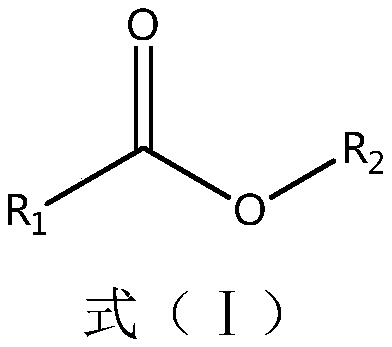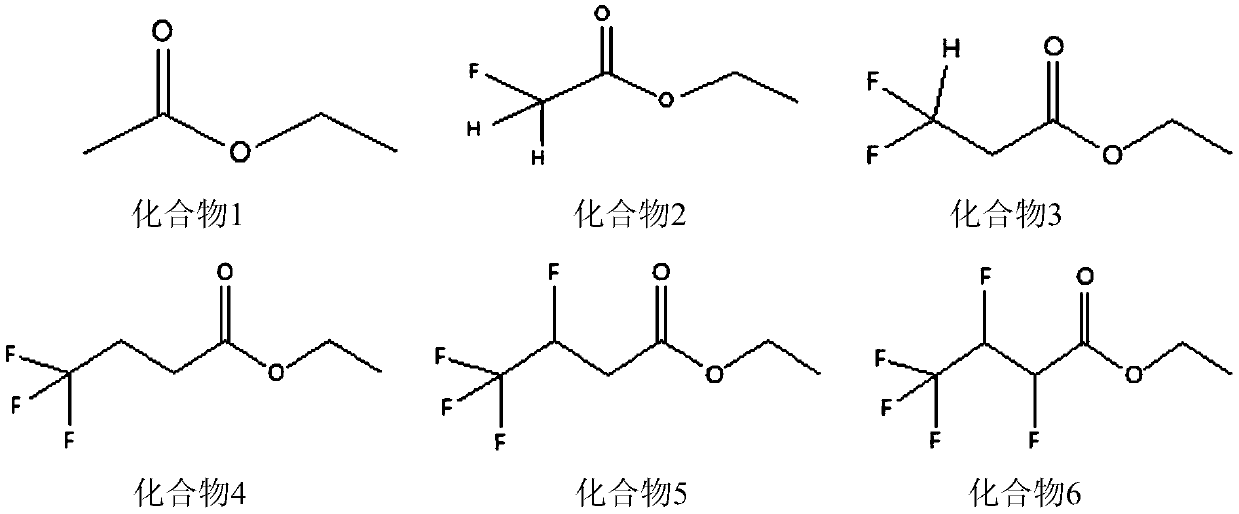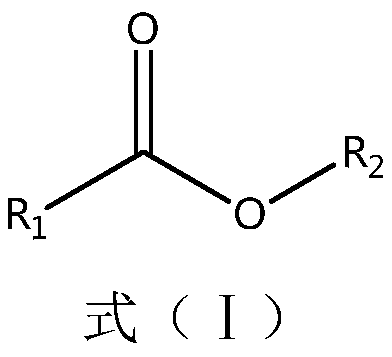Non-aqueous electrolyte for ternary lithium ion batteries and nickelic lithium ion battery comprising electrolyte
A lithium-ion battery and non-aqueous electrolyte technology, applied in the field of lithium-ion batteries, can solve the problem of not being able to well suppress the dissolution of metal ions in ternary positive electrode materials, the destruction of the structure, oxidation catalysis, and the poor high-temperature cycle performance of high-nickel ternary materials. Good high-temperature storage gas production, ternary material stability decline and other issues, to achieve the effect of improving internal dynamic characteristics, improving cycle performance, and inhibiting decomposition reactions
- Summary
- Abstract
- Description
- Claims
- Application Information
AI Technical Summary
Problems solved by technology
Method used
Image
Examples
Embodiment 1
[0040] Electrolyte preparation steps: In a glove box filled with argon, mix ethylene carbonate, diethyl carbonate and ethyl methyl carbonate according to the mass ratio of EC:DEC:EMC=3:2:5, and then add to the mixed solution Slowly add 12.5wt% lithium hexafluorophosphate, and finally add 1.0wt% compound 1 based on the total weight of the electrolyte, and stir evenly to obtain the lithium ion battery electrolyte of Example 1.
[0041] Inject the prepared lithium-ion battery electrolyte into the fully dried artificial graphite material / LiNi 0.6 co 0.6 mn 0.2 o 2 In the battery, after the battery is shelved at 45°C, formed by high-temperature fixtures and sealed twice, it is routinely divided.
[0042] 1) Battery cycle performance test at room temperature: At 25°C, charge the divided battery to 4.2V at 1C constant current and constant voltage, with a cut-off current of 0.05C, then discharge at 1C constant current to 3.0V, and cycle accordingly. / After 1000 cycles of discharg...
Embodiment 2-14
[0048] Embodiment 2-14 and comparative example 1-6
[0049] As shown in Table 1, in Examples 2-14 and Comparative Examples 1-6, except that the composition ratio of the components of the electrolyte solution is added as shown in Table 1, the others are the same as in Example 1.
[0050] Table 1 embodiment 1-14 and the composition ratio of each component of the electrolyte of comparative example 1-6
[0051]
[0052]
PUM
 Login to View More
Login to View More Abstract
Description
Claims
Application Information
 Login to View More
Login to View More - R&D
- Intellectual Property
- Life Sciences
- Materials
- Tech Scout
- Unparalleled Data Quality
- Higher Quality Content
- 60% Fewer Hallucinations
Browse by: Latest US Patents, China's latest patents, Technical Efficacy Thesaurus, Application Domain, Technology Topic, Popular Technical Reports.
© 2025 PatSnap. All rights reserved.Legal|Privacy policy|Modern Slavery Act Transparency Statement|Sitemap|About US| Contact US: help@patsnap.com



